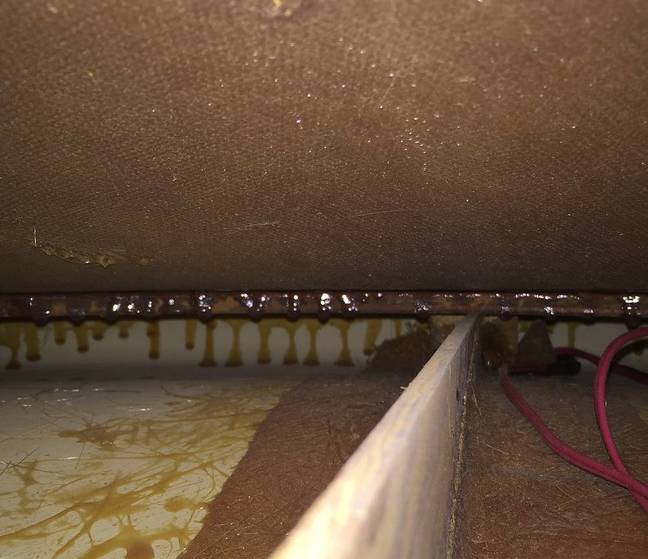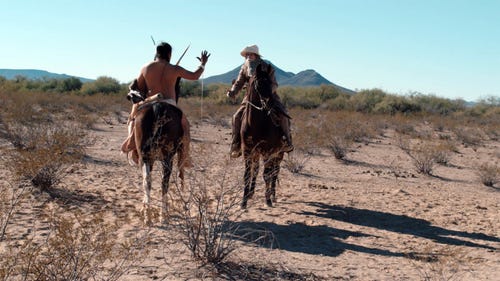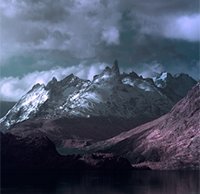View photo
.

Infrared saunas work off of infrared light, which directly impacts your core temperature. (Photo: Yahoo Health/Getty Images)
If you're a fan of the sauna, you've likely noticed your favorite celebs frequenting a different version of the locker room staple: the infrared sauna.
Gwyneth Paltrow's site Goop recently reported on the trend; Lady Gaga posted a photo of herself and a friend who is suffering from cancer on Instagram, hinting at infrared's healing powers; and Jennifer Aniston even told us at Yahoo Health last year that she "loves an infrared sauna" because the "health benefits — like detox, relaxation, weight loss — are amazing." Proponents claim sessions increase circulation, which, in turn, produce body benefits like decreased inflammation.
But what is an infrared sauna and can it really help your health — or is it all just a bunch of hot air?
Where the Trend BeganThe Finnish have long known the powers of the sauna — for thousands of years, they've relaxed in wood-paneled rooms that reach temps exceeding 150 degrees Fahrenheit. The original goal: Escape cold winter days. There are examples of "hot air baths" and "sweat lodges" in Native American, Eastern European, and Chinese cultures, too.
But here's what differentiates an infrared sauna from a traditional one: While a regular sauna heats the air, thereby raising its temperature (and thus, your body temperature), infrared saunas work off of infrared light that directly impacts your core temperature without making the ambient air nearly as hot, explains Brent Bauer, MD, medical direct or of Rejuvenate Spa at the Mayo Clinic Healthy Living Program.
In fact, infrared saunas generally run roughly 20 to 60 degrees cooler than regular saunas, which makes them easier to tolerate, Frank Lipman, MD, an integrative and functional medicine physician and Yahoo Health Advisory Board Member, tells Yahoo Health. Plus, since infrared is radiant heat, Lipman says it penetrates the skin more deeply than traditional saunas.
Related: Can A Vitamin IV Drip Boost Health and Energy?
What the Science Says"The research on both kinds of saunas — regular and infrared — is relatively thin," Bauer tells Yahoo Health. And the studies that do exist on infrared saunas are small, he notes. "That's not to say the research isn't good; but it's also critical that we don't over-interpret it," he says.
A lot of research on how infrared saunas can improve health only includes dozens of people — not thousands, like other, more robust studie s. And these studies tend to be conducted on people with pre-existing health conditions, making it difficult to extrapolate the findings to a broader audience.
The results of the existing research: One Japanese study from last year of 49 people with congestive heart failure found that infrared sauna treatments increased the amount of blood being pumped to people's heart and upped quality of life — both physically and mentally.
Another Japanese study of 21 people with peripheral arterial disease — a circulatory condition in which plaque builds up in the arteries — showed that daily infrared spa sessions for six weeks reduced leg pain and blockage of the arteries.
Another review of existing literature published in Canadian Family Physician determined there was "limited moderate evidence" to support infrared spa usage for "normalizing blood pressure and treating congestive heart failure"; "fair evidence" (from one study) to support the therapy for chronic pain; and "weak evidence" (again: one study) to suggest its use for chronic fatigue syndrome and obesity.
To put it simply: "There are some basic early trials that look intriguing," says Bauer.
Related: Can Drinking Alkaline Water Keep You Extra-Hydrated And Disease-Free?
Most of the positive perks, he says, come from heating up your body.
"Plenty of research suggests that saunas — dry, wet, or infrared — have beneficial effects on lowering blood pressure," Sean Mullen, PhD, director of the exercise, technology, and cognition laboratory at the University of Illinois at Urbana-Champaign, tells Yahoo Health.
"The sauna has an oxidative effect. Blood is going out to your extremities; your pores open, allowing you to sweat; and heart rate increases in an attempt to cool your body down," says Mullen. In some ways, saunas mimic the effect of exercise on the body, he notes.
Bauer also says that small human and ani mal trials suggest that raising the core temperature of the body increases basal dilation — or the opening of arteries — improving blood flow and circulation. Small trials suggest, too, that inflammatory markers in blood seem to improve with infrared sauna treatments in patients with heart troubles, he says.
Because of better circulation and blood flow, you could also have increased collagen production, says Lipman, which leads to better, younger looking skin.
The issue: We're certainly not at a point where this is proven in a general population, says Bauer: "People generally tend to just say they feel better and more relaxed after the sauna."
As for claims that infrared saunas "detoxify"? "Some people who talk about saunas and sweating talk about releasing toxins — but we have to be careful with that," says Bauer. "To say you sweat and get rid of toxins is a little simplistic. There may be a grain of truth, but there are not a lot of toxins known to be released by sweat."
The VerdictGiven the limited data on them, infrared saunas seem to be legit — but talk to your doc before you jump onboard.
So long as infrared saunas are used in moderation (you don't want to overheat), Bauer says the very small studies with selected patients that have been done haven't shown many negative side effects. "Most of the data looks positive in terms of having some benefit — we just don't have enough data on who benefits from what," he says.
But does that mean you should rush off and buy an infrared sauna to boost your health? Not yet, says Bauer, though there is evidence spending time in one dilates blood vessels (which could lead to an increase in circulation) and decreases inflammation. So, the decision to try it out really comes down to personal preference. If you're interested, discuss using an infrared sauna with your doc. People taking blood pressure medication, those with a history of h eart conditions, and older adults are sometimes advised to avoid saunas, notes Mullen.
If you and your doc decide it could be for you, consider spending 30 minutes or less three times a week in one — an amount of time that has shown benefits in small studies, says Bauer.
Infrared saunas look a lot like regular saunas, except you won't see the hot stones since they're heated by infrared panels. Many health spas have infrared saunas you can use, but if you do get your own, Lipman says quality units start at about $1,800. One of the most important seals to look out for is Electrical Testing Laboratories (ETL). It ensures that the sauna is electrically sound and meets safety and performance standards.
"The healing part of this is physiological to an extent — your heart rate can get pretty high — but there's also some evidence that there are psychological effects," says Mullen. "Being in there alone with your thoughts and being mindful can hav e positive effects on metacognitive thinking and it's a way of relieving stress."
Read This Next: Can Reishi Mushroom Powder Boost Your Immunity?
Let's keep in touch! Follow Yahoo Health on Facebook, Twitter, Instagram, and Pinterest.
Healthinfrared saunaYahoo Source:
Do Infrared Saunas Boost Circulation?






